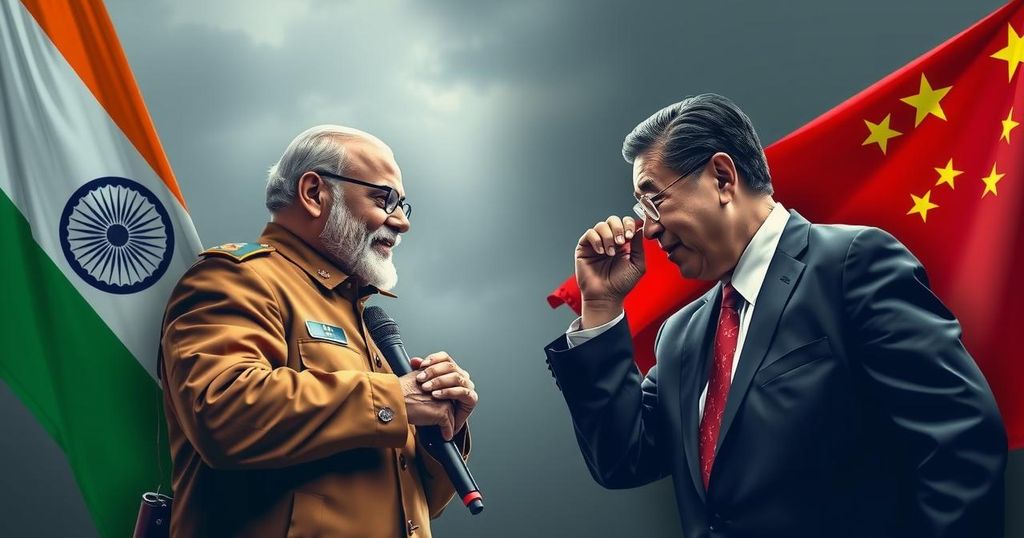India and China Reach Agreement on Border Patrolling Arrangements and Military Standoff Resolution

India and China have reached an agreement on patrolling arrangements, resolving a military standoff at the Line of Actual Control that began in April 2020. The agreement extends to areas previously unresolved, including Demchok and Depsang. This development is expected to facilitate future discussions between Prime Minister Modi and President Xi at the upcoming BRICS summit, amid ongoing diplomatic efforts to ensure peace along the border.
In a significant development, India and China have reached an agreement concerning patrolling arrangements and the resolution of their military standoff along the Line of Actual Control (LAC). The government officially announced this agreement on October 21, 2024. According to sources, the new patrolling arrangements extend beyond the areas along the LAC where military personnel had already disengaged in recent years, encompassing previously unresolved territories such as Demchok and Depsang. This resolution suggests an end to the standoff that began in April 2020. Foreign Secretary Vikram Misri, while providing an update during a media briefing ahead of Prime Minister Narendra Modi’s participation in the BRICS summit in Russia, elaborated on the developments stating that the two nations had made considerable progress through ongoing diplomatic and military discussions. He emphasized that the agreement covered multiple issues related to patrolling along the contested border areas, indicating a move toward disengagement and conflict resolution that had begun in 2020. The timing of this announcement, just before the BRICS Summit, raises expectations for a subsequent meeting between Prime Minister Modi and Chinese President Xi Jinping, although Mr. Misri refrained from confirming such an encounter. He conveyed that the government is exploring the opportunity for several bilateral meetings during the summit. Furthermore, Mr. Misri mentioned recent negotiations leading to this breakthrough, highlighting high-level dialogues involving Indian External Affairs Minister S. Jaishankar and Chinese Foreign Minister Wang Yi, along with further discussions among military commanders and officials within the Ministry of External Affairs. On the matter of disengagement, External Affairs Minister Jaishankar commented, “We have gone back to where the situation was in 2020; so we can say that the disengagement process with China has been completed. To my knowledge, we have reached an understanding regarding patrolling.” He underscored the necessity of ensuring peace and tranquility in border areas as they move forward.
The India-China military standoff first erupted in April 2020, leading to intense confrontations along the Line of Actual Control, most notably at the Galwan Valley, resulting in casualties on both sides. The situation prompted significant diplomatic efforts to resolve ongoing tensions, involving numerous rounds of negotiations and military disengagements. This latest agreement reflects an ongoing commitment from both nations to stabilize their relationship and restore previous protocols concerning border patrolling, aiming to establish a framework for enduring peace in the region. The agreement comes at a strategically crucial moment with both leaders participating in the BRICS summit, which could facilitate further constructive dialogue between India and China.
The agreement on patrolling arrangements and the resolution of the military standoff between India and China represents a positive step towards easing tensions that have persisted since 2020. The collaboration of diplomatic and military officials has culminated in an understanding that not only restores previous practices along the LAC but also lays the groundwork for potential future engagements between the respective leaders of both nations. This development highlights the significance of sustained diplomatic efforts in addressing complex geopolitical challenges.
Original Source: www.thehindu.com








